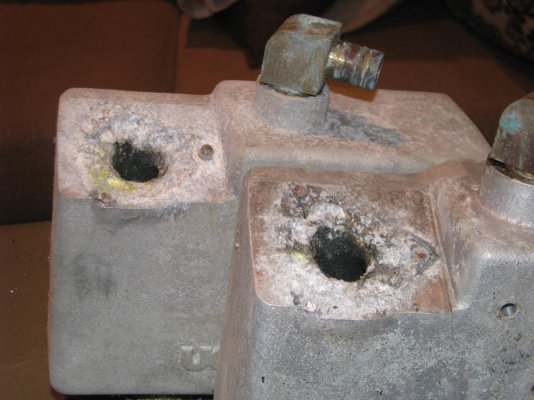Hi All,
I've experienced repeated failures of the exhaust manifold on my Onan MDKAU genset (approx 5KW) and I'm wondering if anyone else has had a similar experience.
The genset is in a 2002 Island Gypsy Eurosedan. I've experienced 3 identical failures of the exhaust manifold at the point where the cooling water-exhaust mixer bolts on. The aluminum exhaust manifold and the steel hex-head bolts attaching the steel water-exhaust mixer to the manifold corrode away until the mixer separates from the manifold. In the 8 years I've owned the boat (bought as a dealer demo in 2005), the exact same failure has recurred three times. I've had two failures when the genset was running, dumping cooling water into the bilge and releasing exhaust into the engine room. When winterizing the boat last fall, I noticed the manifold had failed again. The first two times I replaced the manifold (see the photo below); this time I have a service call scheduled with a Cummins service tech to see what can be done.
Anyone have a similar experience? I assume the problem is the result of the use of an aluminum exhaust manifold. Any knowledge of a source for a cast iron or SS manifold?
I've experienced repeated failures of the exhaust manifold on my Onan MDKAU genset (approx 5KW) and I'm wondering if anyone else has had a similar experience.
The genset is in a 2002 Island Gypsy Eurosedan. I've experienced 3 identical failures of the exhaust manifold at the point where the cooling water-exhaust mixer bolts on. The aluminum exhaust manifold and the steel hex-head bolts attaching the steel water-exhaust mixer to the manifold corrode away until the mixer separates from the manifold. In the 8 years I've owned the boat (bought as a dealer demo in 2005), the exact same failure has recurred three times. I've had two failures when the genset was running, dumping cooling water into the bilge and releasing exhaust into the engine room. When winterizing the boat last fall, I noticed the manifold had failed again. The first two times I replaced the manifold (see the photo below); this time I have a service call scheduled with a Cummins service tech to see what can be done.
Anyone have a similar experience? I assume the problem is the result of the use of an aluminum exhaust manifold. Any knowledge of a source for a cast iron or SS manifold?

